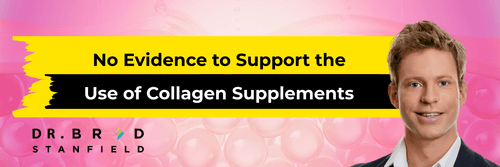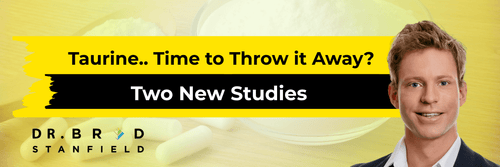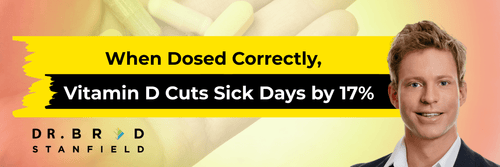You’ll hear people say we’re using more sunscreen, but skin cancer rates are rising. They go on to conclude that sunscreen must not help, and we don’t need to use it.
But this can be a literally deadly conclusion to draw. We need to take a closer look at what’s really going on and avoid some myths that can lead us to sharply increase our skin cancer risks.
Table of Contents
- What’s up with rising rates?
- Myth 1: Tanning Beds Can Be Safe
- Myth 2: Getting a Tan Is Safe If I’m Wearing Sunscreen
- Myth 3: Being in the Sun Is Safe If I’m Wearing Sunscreen
-
So Does Sunscreen Help?
- References
What’s up with rising rates?
Let’s start by looking at the facts. First, are people really using more sunscreen? In many places, yes. In the U.S., for instance, reported use has climbed from 25% to 33% since 2000 [1].

Another study of beachgoers in Denmark revealed a similar trend. The frequency of sunscreen use among women increased from 45% in 1997 to 78% in 2016. Among men, use went from 39% to 49%. At the same time, typical SPF levels increased, and people also applied more [2].
Second, are skin cancer rates rising? Yes, this is happening, too. The rate of people being diagnosed with melanoma, for instance, has been climbing in the U.S., the U.K., Australia, and elsewhere [3].

The fact that both of these trends are happening at the same time is a bit surprising. We’d expect more sunscreen use to lower skin cancer rates. At least that’s what we’d expect if sunscreen is truly effective in protecting us from the sun’s harmful UV radiation.
And here’s where skeptics enter the conversation. They say the reason these trends are both happening at the same time is that sunscreen doesn’t work. It’s a waste of our money, and we don’t need to bother with it.
But drawing that conclusion would be a big mistake in terms of our health.
The first thing that’s crucial to keep in mind is the way populations are shifting over time. People are having fewer kids and living longer, pushing the proportion of people over 65 upward [4].

This trend is only going to accelerate in the years ahead. Why does this matter? Skin cancers are much more common the older we get. This chart from the U.K., for example, shows peak melanoma diagnoses in the 70s [5].

While this is an important part of the picture, however, it only explains so much. Researchers looking at overall skin cancer rates from around the globe calculated how the incidence of cancer is changing when we take aging into account. In other words, they use a statistical method to try to compare rates today with rates a couple of decades ago. In essence, they’re saying, “Let’s imagine the age distribution has stayed exactly the same. What trends would we see in cancer incidence then?” What they found was this. Globally, and for all skin cancer types, the incidence rate has grown steadily from 1990 to 2021. The annual change has been almost 2% [6].
And that’s after accounting for an aging population.
What’s particularly alarming is that we’re seeing rising rates of melanoma among the young. For instance, in the U.S., the incidence rate for young men in 2009 was four times what it was in 1970. In young women, the 2009 rate was 8 times as high [7].
So what else, besides populations getting older, might be driving the increase in skin cancer? The authors of this study suggest the most important factor is the most obvious one. More skin cancer is driven by more UV exposure [6].
But this brings us back to sunscreen. People are wearing it more; shouldn’t that be helping?
Here’s why the picture is more complicated. There are 3 dangerous myths that are dramatically ramping up exposure to harmful UV radiation, despite increasing sunscreen use. Let’s take a look at what they are. Then we’ll return to the question of how we can use sunscreen the right way to actually lower our risks and make sure that we select a sunscreen that doesn’t have ingredients which are absorbed through the skin and reach our bloodstream.
Myth 1: Tanning Beds Can Be Safe
The first myth is that tanning beds can be a safe way to tan.

Why might someone think this? The fact that tanning beds can appear in an environment that feels vaguely like a healthcare facility is probably part of it. And indoor tanning companies often use marketing language that implies a careful, scientific approach to exposure.

They might also emphasize supposed benefits of tanning, like boosting mood or vitamin D production. And with the wave of popularity regarding Vitamin D, this can be a powerful marketing tactic.

When asked, many report they use tanning beds as a way to get a “pre-vacation” tan. The idea is that it could help us to get a base layer of tan before heading to the beach [8].
But there’s a huge problem. Tanning beds aren’t safe.
We have a massive amount of data linking tanning beds with skin cancer risk. A recent meta-analysis included 36 studies and over 14,000 melanoma cases. It found melanoma risk is 27% higher for those who have ever used a tanning bed [8].
And there’s a dose-response relationship here. One meta-analysis calculated a shocking 1.8% increase in melanoma risk for each additional session of indoor tanning per year [8].
What about other types of skin cancer? Tanning beds look like a culprit here, too. A 2021 meta-analysis, for example, concluded the risk for squamous cell carcinoma was 58% higher for those exposed to tanning beds [8].
Why are tanning beds so dangerous? One of the main reasons has to do with the levels of UV radiation produced. Tanning beds can emit UV radiation in amounts 10 to 15 times higher than direct sun exposure [9].
The annual dose of UVA radiation that frequent tanning bed users get is up to 4.7 times higher than what an average individual gets from sunlight [7].
Data like this is why tanning beds have been classed as a Group 1 carcinogen by the International Agency for Research on Cancer. That’s in the same group as well-established carcinogens like cigarettes and asbestos [7].
Myth 2: Getting a Tan Is Safe If I’m Wearing Sunscreen
But tanning beds aren’t the only problem. In a way, a greater awareness and usage of sunscreen is, paradoxically, also having a negative impact.

For one thing, it encourages belief in a second myth: that using sunscreen gives us a safe way to tan.
The way many think it works is like this: Sunscreen blocks the harmful rays of the sun so that we can get a tan through just the good rays.
But the only wavelengths of sunlight that stimulate the tanning process are UVA and UVB radiation. So when we get a tan, this means we’ve been exposed to significant levels of one or both, which damages our DNA, mutating it, and causing skin cancers [10].
Myth 3: Being in the Sun Is Safe If I’m Wearing Sunscreen
For many, that comes as a surprise. And this leads us to the third myth — that being in the sun is safe as long as we’re wearing sunscreen.

The reason we can get a tan while we have sunscreen on is that it doesn’t block all UV radiation. Most are familiar with SPF ratings, which stand for “sun protection factor.” But SPF is primarily a measure of how much UVB radiation is blocked [11].
That’s because the initial interest in sunscreen was in preventing sunburn, and UVB is its primary driver. So sunscreen testing still focuses on how much it guards against skin redness after sun exposure [12].
Here’s what the numbers mean: An SPF of 15 blocks 93.3% of UVB radiation. An SPF of 50 blocks 98% [11]. Even an SPF of 100 doesn’t block 100%.
But then there’s the matter of UVA radiation. That focus on UVB in sunscreen evaluation has meant UVA protection can often be less pronounced — even though most sunscreens now are called “broad spectrum.” This chart shows that effectiveness drops markedly as we move from UVB to the UVA part of the spectrum [12].

So sunscreen does provide some protection (and we’ll say more about that in a minute). But it doesn’t provide complete protection. And the thought that it does leads people toward behavior that boosts their exposure to harmful UV radiation.
When people are wearing sunblock, they feel safe. And that leads them to spend more time in the sun. The problem is compounded because most people don’t use an adequate amount of sunscreen and don’t apply it properly. So they end up with even higher levels of damaging exposure [3].
To stay safe, we need additional tactics. First, we should avoid direct sunlight during the middle of the day when radiation levels are highest. Second, we can cover up with UV-blocking clothing, hats, and sunglasses to provide much stronger protection.
So Does Sunscreen Help?
At this point, you might be wondering: Given everything we’ve said, does sunscreen even help after all?
Yes, it does. Sunscreens are able to block a substantial percentage of harmful UV radiation when we apply them according to directions. And this makes a real difference in practice.

One of the more important studies of sunscreen and skin cancer was conducted in Australia. It started in 1992, with about 1,600 people being assigned to a group that used sunscreen daily or a group that used it as desired. After four years, the study was stopped. But they followed up with participants ten years later. They found the risk of developing melanoma in the daily sunscreen group was half of that for the other group [13].
Admittedly, the data around the relationship between sunscreen use and skin cancer is complex. There have been recent meta-analyses that have found no significant effectiveness of sunscreen for preventing skin cancers [14].
Research is quite difficult in this area. We mostly have to stick to population studies. And sunscreen often encourages people to engage in more risky behaviors. So their increased exposure somewhat cancels out the benefits of the sunscreen. Skin cancers also develop slowly — exposure may lead to cancer decades later.
But there are two strong arguments that sunscreen is effective. First, we know sunscreen blocks a high percentage of UV radiation. And UV radiation drives skin cancer in a dose-dependent manner. So using sunscreen helps block the driver of skin cancer.
Second, sun damage is also the primary driver of skin aging — and aging from the sun (photoaging) shows up more quickly. So it’s easier to observe the effects of sunscreen there.
A landmark 2013 trial of 903 adults showed the group who used sunscreen daily didn’t show any signs of new skin aging after 4.5 years [15].
An analysis of the literature puts it this way: “Evidence from observational studies, a large randomized controlled trial, and smaller, nonrandomized experimental studies supports the effectiveness of sunscreens in preventing the signs of photoaging” [14].
If we’re preventing the signs of aging with sunscreen, that means we’re reducing exposure to damaging radiation from the sun. And that means we’re also reducing the driver of skin cancer.
References
1. https://www.ncbi.nlm.nih.gov/books/NBK587264/
2. https://medicaljournalssweden.se/actadv/article/view/5003
3. https://pmc.ncbi.nlm.nih.gov/articles/PMC10741796/
4. https://www.npr.org/2011/09/24/140736119/as-europe-ages-its-economies-look-vulnerable
6. https://www.nature.com/articles/s41598-025-90485-3
7. https://pmc.ncbi.nlm.nih.gov/articles/PMC11931655/
8. https://pmc.ncbi.nlm.nih.gov/articles/PMC9689757/
9. https://pmc.ncbi.nlm.nih.gov/articles/PMC4929140/
10. https://pmc.ncbi.nlm.nih.gov/articles/PMC2913608/
11. https://pmc.ncbi.nlm.nih.gov/articles/PMC3460660/
12. https://onlinelibrary.wiley.com/doi/10.1111/phpp.12738
13. https://ascopubs.org/doi/full/10.1200/JCO.2010.28.7078



















